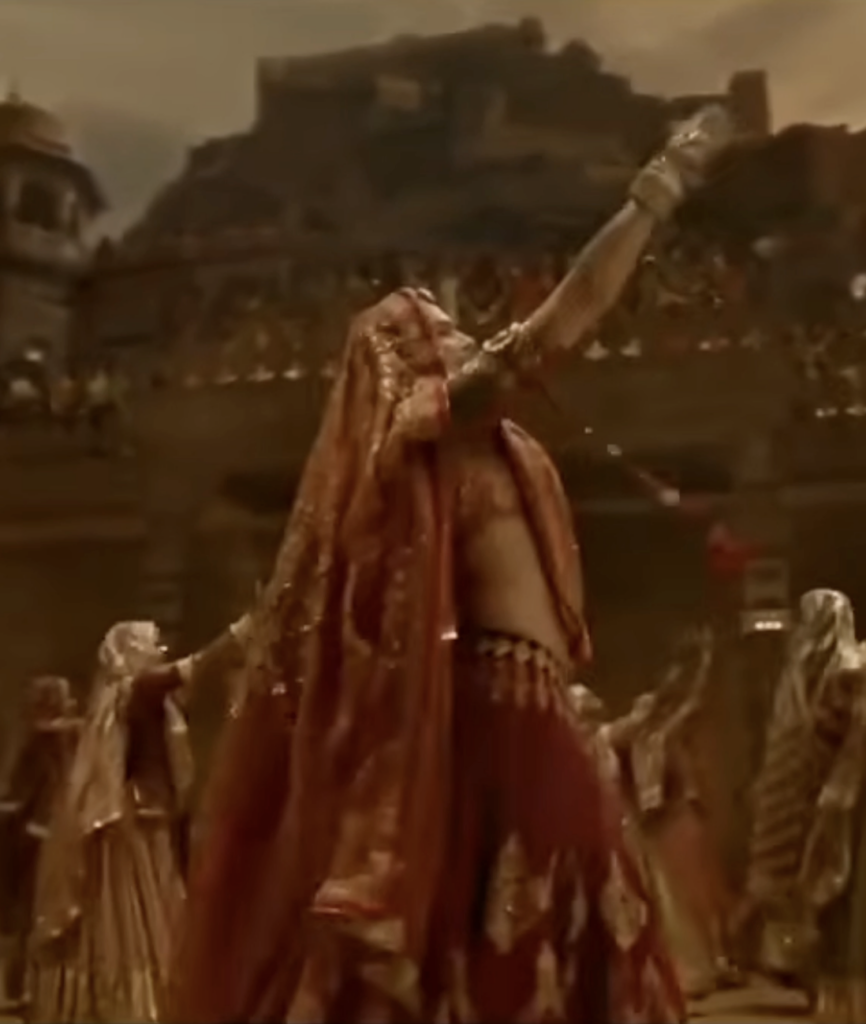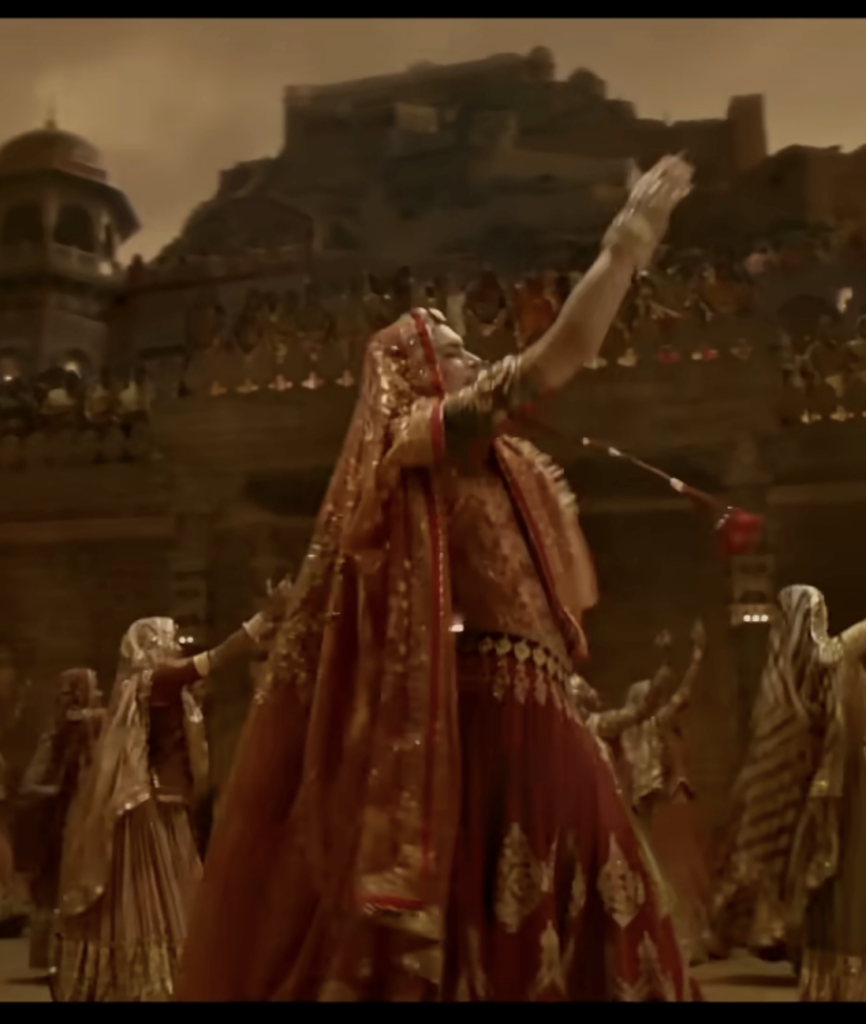Recently, I watched the Indian movie „Padmavaat“. The film, which released in 2018 stirred up multiple controversies among some communities of the Indian public. Directed by acclaimed Indian director Sanjay Leela Bhansali, „Padmavaat“ is set in medieval Rajasthan. It revolves around the story of Queen Padmavati, who marries a noble king and lives a prosperous live. Soon, an ambitious Sultan hears of Padmavati’s beauty and forms an obsessive love for the Queen, sparking a plan to steal her away for himself.1
Director Sanjay Leela Bhansali, who is known for his elaborate period dramas, had faced multiple instances of backlash from the Rajput community since the production of the film started. The controversy hinged mostly on grievances about the portrayal of Rani Padmavati, which were seen as insulting and misrepresenting. Protests even turned violent, with protesters vandalising sets and even attacking the director himself. After a rescheduling, the movie was finally released on 25 January 2018.
One of the details of the movie which spurred backlash was the performance and costuming featured in the song. “Ghoomar”. Diegetic songs and choreographed dance numbers are a prominent aspect of Indian films and are featured in a large majority of films of all genres. On Twitter, critics argued that the song misrepresented the Rajput queen Padmavati, leading to claims of disrespect. Protests erupted in November 2017, with some asserting that Rajput queens never danced publicly. Women from the Rajput community joined the protests, voicing concerns that the depiction of the queen in revealing attire was inappropriate. They stated that a Rajput queen would neither perform before an audience nor expose her midriff.
The controversy also drew the attention of the Central Board of Film Certification. On 30 December 2017, the board requested edits to scenes showing Padukone’s midriff to present a more modest portrayal of Queen Padmavati. Instead of reshooting, director Sanjay Leela Bhansali used computer-generated imagery to implement the changes. A revised version of „Ghoomar“ was released on 20 January 2018, featuring Padukone’s midriff digitally covered.2
The achievement of this digital clothing insertion is quite remarkable, since the dance number features complicated movements that not only pose an immense challenge for rendering a realistic movement and lighting of the fabric but are further complicated by the tracking the body of the actress Deepika Padukone. The original shot was not captured with tracking in mind, which must have made it extremely challenging for the CGI artists. Unfortunately, I was not able to find details on the process of how the digital clothes where inserted. It would have been a fascinating case study.
Why is this Topic Relevant for my Thesis?
The insertion of digital clothing to meet standards of modesty in different film industries around the world is quite a common practice. A different and more recent example apart from “Padmavaat” is the 2023 Hollywood film “Oppenheimer”, in which a nude scene featuring actress Florence Pugh was altered for some distribution markets by inserting a digital black dress.3
This censorship through digital clothes is one application of “digital fashion” that presents a very concrete real world use case. The implications of using these digital clothing insertions are worth discussing as a separate topic. Several aspects can be discussed, such as the validity of these modesty standards in the first place (which of course is a much larger and much more intricate topic). Alterations that are performed to the original vision of the costume designer by inserting these digital garments for censorship reasons are also an interesting discussion to have. I have not been able to find sources discussing whether the digital clothing designs were discussed with the costume designers of the respective movies. But the issue of whether or not they align with the original vision of the costume designer is questionable to say the least.
Images


1 “Padmaavat (2018).”
2 “Padmaavat Before and After: Look How They Secretly Covered up Deepika Padukone’s Midriff in Ghoomar.”
3 Rubin, “Florence Pugh’s Nude Scene in ‘Oppenheimer’ Covered Up by CGI Black Dress in India and Middle East.”
Sources
IMDb. “Padmaavat (2018)” January 25, 2018. Accessed January 5, 2025. https://www.imdb.com/title/tt5935704/.
Hindustan Times. “Padmaavat Before and After: Look How They Secretly Covered up Deepika Padukone’s Midriff in Ghoomar,” January 20, 2018. https://www.hindustantimes.com/bollywood/ghoomar-before-and-after-look-how-they-secretly-covered-up-deepika-padukone-s-midriff-in-padmaavat-song/story-6wceiAO2DAu3u0GgmJhdAM.html.
Rubin, Rebecca. “Florence Pugh’s Nude Scene in ‘Oppenheimer’ Covered Up by CGI Black Dress in India and Middle East.” Variety, July 24, 2023. https://variety.com/2023/film/news/oppenheimer-florence-pugh-nudity-india-cgi-black-dress-1235678665/.